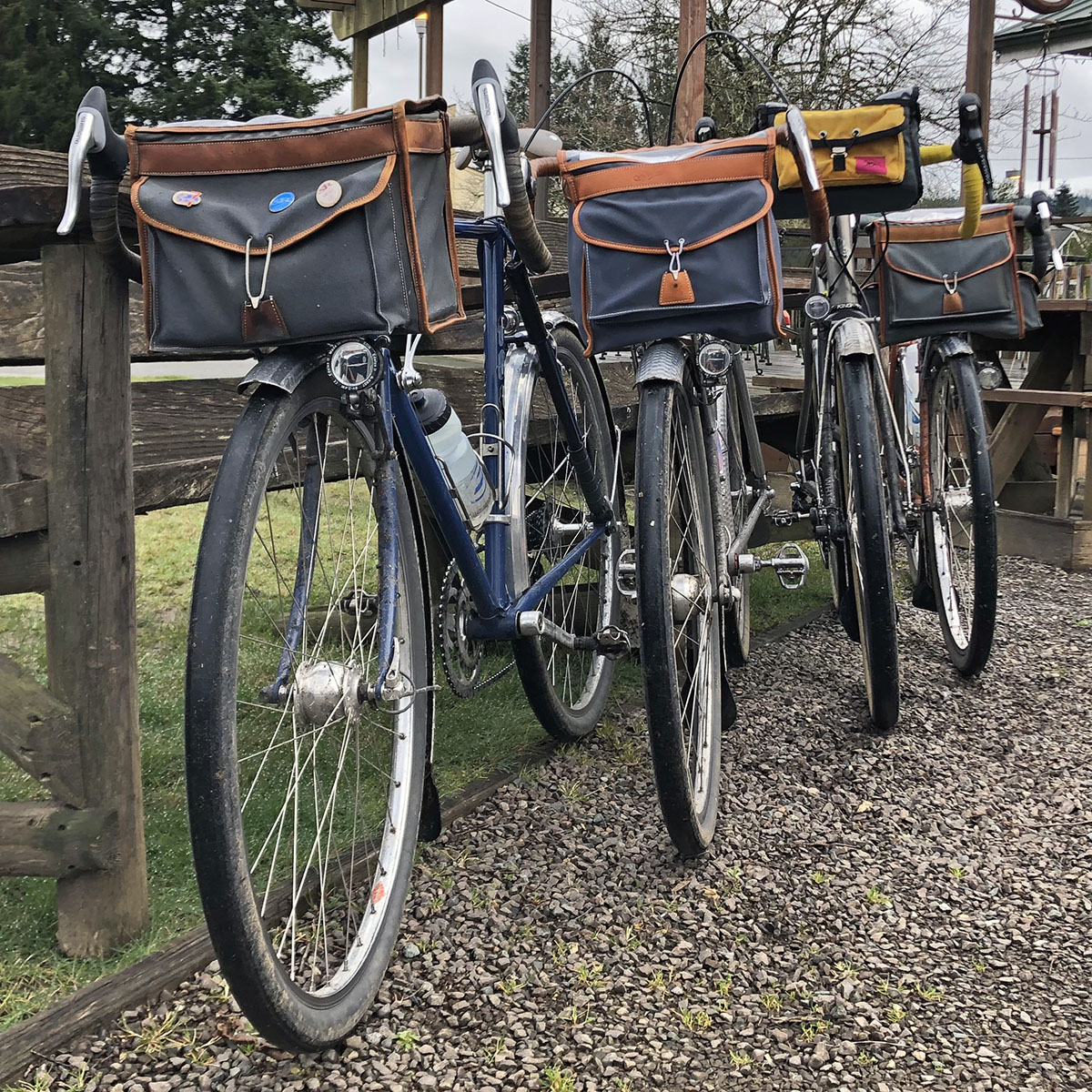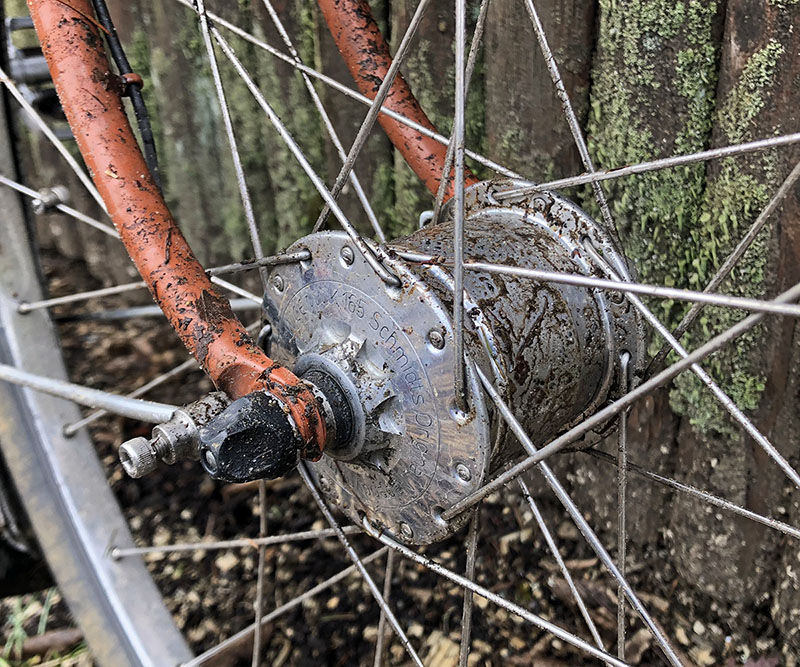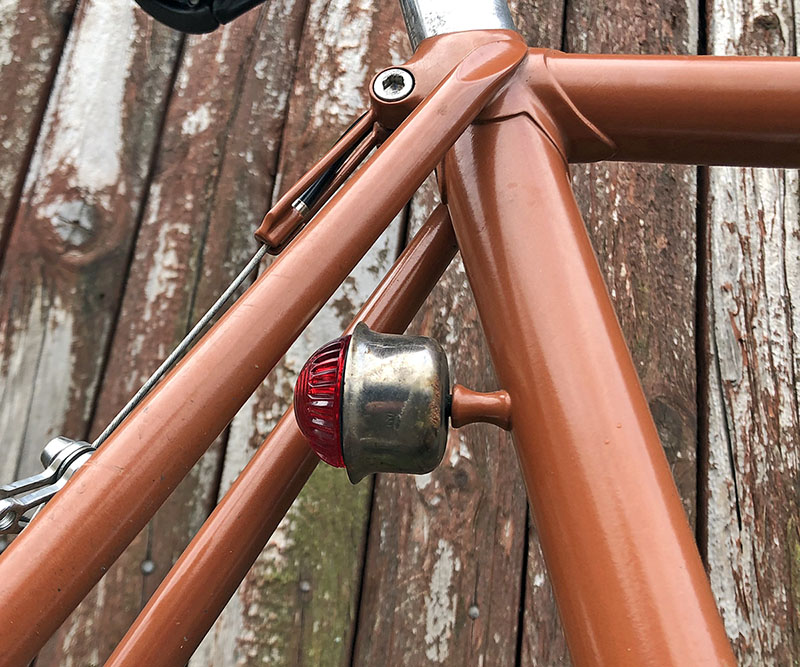What We Ride (Part 1): Mark’s 6-Hands

Editor’s Note: We’ve been thinking about our role in the response to Covid-19. Here is what we can do: If there is a way we can positively influence the situation – like advocating social distancing and wearing face masks before these practices had widespread support – it’s our responsibility do so. If we can do something to help directly, we will also act: We are working with our suppliers to make masks. And we also realize that the relentless (and mostly bad) news is taking a toll. One thing we can do is inspire our readers. We’ll try to remind you (and ourselves) that there is a beautiful world out there, waiting to be explored. We’re all in this together – let’s stay strong and positive!

And with that, we’ll start a mini-series of posts about the bikes of the BQ Team. We all love testing the latest wonder machines, the featherweight carbon bikes and the gleaming customs straight from NAHBS, but these are the bikes we’ve bought with our own money (or built with our own hands). These are the bikes we ride when we head out, whether it’s a fast spin around the North End of Lake Washington or a multi-day adventure to explore the forgotten passes of the Cascade Mountains. We ride these bikes because they work best for us.
The photos you see here were taken during our last pre-social-distancing ride on March 1. It was a gorgeous morning, but it had rained all night. This was a typical Saturday ride: We started in Seattle before sunrise, for a 100-mile gravel-and-paved, mixed-surface loop.
The bikes you see here are no show queens. They are well-worn and, 60 miles into our ride, they are splattered with mud. The photos show what we ride and how we ride them.

The oldest of the bunch is Mark’s 6-Hands, built in 2007. It’s one of the first modern 650B randonneur bikes in the U.S., with a superlight steel frame, low-trail geometry, 650B x 42 mm Babyshoe Pass tires and compact cranks – long before these features became commonplace. It was originally built by Curt Goodrich. A few years later it had an accident and was rebuilt with lighter-gauge top and down tubes and a new fork. Curt, Mark and our friend Hahn all worked on the bike, hence it’s now called the ‘6-Hands.’
A few parts have been changed over the years, most notably the Rene Herse cranks and our Randonneur handlebars, but the rest remains as it was 13 years ago. The 6-Hands is still one of the fastest bikes we’ve ever tested, and it often serves as a benchmark during Bicycle Quarterly’s bike tests.
The biggest change has been the frame tubing. When it was built with a standard Reynolds 531 tubeset, it performed quite well, but not as well as the fastest bikes we were testing for the magazine. After Bicycle Quarterly’s famous double-blind tests of frame stiffness, Mark rebuilt it with a lighter tubeset, and that transformed its handling. It’s now much easier for Mark (and me, when I ride it) to get in sync with the frame when we pedal – the 6-Hands now planes beautifully for us.

The age of the bike is apparent in its components, like the old SON generator hub. This one is a SON20, originally designed for 20-inch wheels. The smaller wheels spin faster, so the hub doesn’t need to put out as much power. Way back, we figured that using the small-wheeled hub in a standard-sized 650B or 700C wheel results in less resistance. When we first suggested this, SON was skeptical, but it worked well as long as you keep your speed above 5 mph (8 km/h). Then came modern LED lights that use less energy, and SON introduced the Delux and got it approved for all wheel sizes.
Mark’s old hub is still spinning smoothly – it’s one of the first that have SON’s pressure compensating system that prevents moisture from getting sucked through the bearings during temperature changes. (Generator hubs have a large air volume inside that contracts when it gets cold.)
The extra screws you see on the dropouts are for attaching a low-rider rack. When Mark designed his bike, he planned to keep his old bike for loaded touring, so he didn’t ask for extra eyelets beyond the fender mounts. Then he found that he enjoys the 6-Hands so much that he built a low-rider rack for it, and it’s the bike he now uses for camping trips – and pretty much everything else.

The bike is almost a prototype for what we’re riding now. The taillight is a battery-powered light J. P. Weigle made at the time, converted from a boating light. This was long before we developed our Rene Herse taillight. Mark also made a generator-powered taillight that looks like a Supernova (but predates it by many years). It’s mounted underneath the left chainstay.

Most of the parts on Mark’s bikes are pretty standard now – centerpull brakes and 650B wheels are no longer exotic – but there are some unique touches. Mark mounts his bike computer on the fork crown (with a special braze-on). Down there, he can see the information he needs for navigation (and even check his speed), but the numbers aren’t distracting him from the ride and the landscape he enjoys.

Another neat part is Mark’s saddle. It looks like an old Avocet O2 with titanium rails, because that is how it started out. Mark was riding Brooks saddles, but he got frustrated with their variable quality. So he took his last, prematurely-worn-out Brooks and made an impression of its top. He took the cover off the Avocet and carved away the foam until it matched the shape of his old Brooks. Then he glued the cover back on. The result is a supremely comfortable, lightweight and surprisingly durable saddle.
Here’s the full parts spec of the 6-Hands:
- Frame: 7-4-7 top tube, 8-5-8 down tube, standard diameter
- Fork: Kaisei ‘Toei Special’ fork blades
- Rack: custom
- Cranks: Rene Herse 46×32 with SKF 107 mm bottom bracket
- Derailleurs: Shimano Ultegra 9-speed with downtube shift levers
- Pedals: Shimano A520 single-sided SPD
- Front hub: SON20, 28 hole
- Rear hub: Shimano Ultegra 9-speed, 32 hole
- Cassette: 13-27 8-speed (9th cog is replaced by a chainrest)
- Rims: Pacenti Brevet
- Tires: Rene Herse 650B x 42 mm Babyshoe Pass Extralight
- Tubes: Schwalbe SV14A Extralight
- Brakes: Mafac Raid with Rene Herse hardware and Kool-Stop salmon pads
- Brake levers: Tektro
- Headset: Miche needle-bearing
- Stem/decaleur: custom
- Handlebars: Rene Herse Randonneur, 40 cm
- Seatpost: Ritchey, de-anodized and polished
- Saddle: Avocet O2 modified
- Headlight: SON Edelux I hanging (prototype)
- Taillight: custom (2x)
- Fenders: Rene Herse fluted H79
- Pump: Zefal hpX2, de-anodized and polished
- Handlebar bag: Berthoud GB28
- Weight: 11.5 kg (25.3 lb) including pedals, bottle cages and pump
Mark sums his bike like this: “When I get on this bike and head out, from the first pedal stroke it feels like I’ve been riding it all day. It’s like meeting an old friend you haven’t seen in years, and feeling like you’ve never been apart.”
It’s remarkable that the 6-Hands – which went into uncharted territory back then with novel features like thinwall tubing, low-trail geometry and wide tires – has aged so well: After more than a decade and 10,000s of miles, it’s still a joy to ride, and the things Mark would change, if he was building a new bike today, are details that don’t really affect how the bike rides and performs. There aren’t many bikes that remain cutting edge, 13 years after they’ve been built!
Further reading:
- Bicycle Quarterly’s double-blind tests of frame stiffness
Coming soon:


